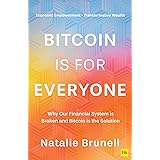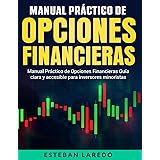The global financial system has reached an inflection point, leading to an undeniable macroeconomic shift that dictates the future performance of asset classes. As discussed in the accompanying video featuring Raoul Pal, a renowned macroeconomic analyst, a critical framework for understanding this new financial paradigm centers on the inevitability of debasement and the profound impact of liquidity on asset valuations. This perspective suggests a future where traditional investment strategies may prove insufficient, with only a select few assets poised for significant acceleration.
Currently, the world is confronted with an unprecedented debt burden, estimated at 400% of global GDP. This colossal figure presents a systemic challenge: governments find themselves unable to service their interest bills through organic economic growth. Furthermore, central banks face limitations in their ability to tighten monetary policy without risking systemic collapse. In such a scenario, policymakers are presented with two primary choices: sovereign default or currency debasement. Historical precedent consistently demonstrates that the path of debasement is favored, which necessitates increased liquidity injections into the financial system.
The Inevitable Path of Debasement: A Macroeconomic Imperative
The global economy is observed to be drowning under the compounding weight of debt. Each year, the interest obligations on this debt surpass the rate of economic growth intended to cover it, leading to a widening gap. Once this interest burden crosses a critical threshold, the sustainability of the current financial structure becomes untenable. It is widely acknowledged that major economies, such as the U.S., Europe, or Japan, are unlikely to achieve the sustained, high GDP growth rates necessary to organically resolve this debt issue.
Consequently, policymakers are left with a stark dilemma. One option involves default, a severe measure that would instantaneously write down savings, pensions, and a vast array of assets. The alternative, and historically preferred, path is debasement. This process involves the gradual inflation of away debt through the steady injection of liquidity, effectively papering over the financial shortfalls. Raoul Pal’s analysis strongly contends that debasement is not merely an option but the only viable course of action remaining.
The implications of this choice are far-reaching. Since 2008, a new macroeconomic rhythm has emerged, characterized by a four-year cycle of government refinancing, central bank easing, and subsequent liquidity ramps. A critical observation is that this injected liquidity is never fully retracted, instead compounding at an approximate rate of 8% annually. This persistent expansion of liquidity represents a hidden form of inflation, often referred to as the debasement rate of fiat currency. Once this underlying mechanism is recognized, its profound effect on purchasing power cannot be overlooked.
Liquidity as the Dominant Factor in a “One-Factor” World
For decades, conventional investment wisdom advocated for broad diversification across various asset classes—stocks, bonds, gold, and real estate—as a strategy to mitigate risk and achieve consistent returns. However, in the current macroeconomic regime, where liquidity is posited as the singular, overarching determinant of asset performance, this traditional playbook is increasingly viewed as ineffective for wealth creation. It is argued that such diversification merely allows investors to tread water against the backdrop of systemic debasement.
Research conducted by Raoul Pal illustrates this point vividly. When major market assets are adjusted against global liquidity, their true performance relative to debasement becomes apparent. Equities, while appearing robust in nominal terms, are shown to flatten out considerably once the effects of debasement are accounted for. Gold, historically considered a hedge against inflation, maintains its value but does not typically compound wealth, fulfilling its role as a preserver of capital rather than a growth engine. Real estate, too, exhibits a largely flat trajectory when stripped of the liquidity effect.
It is therefore contended that almost every asset class, once its returns are adjusted for the persistent 8% annual debasement rate, ceases to generate true wealth. This leaves a crucial question for investors: if nearly all assets are being debased, what truly allows for the compounding of purchasing power? The analysis highlights only two categories of assets that demonstrate consistent outperformance in this environment: technology stocks and the broader cryptocurrency market, including Bitcoin and Ethereum.
The underlying reason for this phenomenon is attributed to liquidity. Traditional investment models, built on a complex interplay of growth, profits, interest rates, and political factors, are asserted to be largely obsolete. Instead, nearly all market action is explained by the singular factor of liquidity. Empirical data cited from Raoul Pal’s research suggests that liquidity drives approximately 97% of the price action in the stock market (e.g., NASDAQ) and around 90% in the cryptocurrency market. This implies that other variables, such as earnings, valuations, inflation headlines, and even geopolitics, collectively account for less than 10% of market movements.
Given this overwhelming dominance of liquidity, the implications for portfolio construction are significant. Diversification, once the cornerstone of prudent investment, is now seen as potentially dilutive to returns. Instead, a concentrated approach, focusing on assets that are most leveraged to liquidity expansion, is proposed as the rational strategy. When liquidity acts as a universal tide, scattering investments across disparate asset classes merely ensures underperformance. Concentration, conversely, positions an investor to benefit maximally from the rising tide.
Bitcoin and Crypto: The Purest Expression of Liquidity Acceleration
In this liquidity-driven regime, technology stocks are valued for their innovation, but cryptocurrencies represent a distinct form of “monetary innovation.” They are observed to be the purest and most leveraged expression of liquidity expansion. When liquidity increases, technology assets typically climb. However, cryptocurrencies are distinguished by their tendency not merely to climb, but to surge vertically, demonstrating a “high-beta” response to liquidity shifts. This unique characteristic positions assets like Bitcoin and Ethereum for significant acceleration.
This thesis challenges decades of traditional portfolio theory, which has emphasized broad diversification and careful risk management across multiple factors. However, the prevailing reality, as presented, indicates that in a one-factor world dominated by liquidity, Bitcoin emerges as its purest and most potent expression. This environment is characterized as being “2017 on steroids,” signaling a potentially even more powerful and accelerated cycle than previously observed.
Comparing Cycles: Why This Time Is Different and Bigger
The current market setup is frequently compared to the 2017 cycle, which saw Bitcoin experience a remarkable 23x surge from its January lows to its December peak. Similar patterns are observed today: a strengthening followed by a softening of the dollar, coupled with rising global liquidity and a protracted period of low ISM (Institute for Supply Management) readings. However, it is argued that the present cycle is not simply a repeat but an amplification of 2017.
Several key differences are identified that elevate the potential of the current market cycle beyond anything previously witnessed:
-
Broader Liquidity Channels: In 2017, liquidity primarily flowed through central bank quantitative easing. Today, liquidity is surging not only through central banks but also through expanded private bank balance sheets, a burgeoning shadow banking system, and increasingly, stablecoins serving as efficient conduits for capital. These broadened channels create a more pervasive and permanent liquidity architecture.
-
Institutional Adoption Rails: The infrastructure for institutional participation in crypto has matured dramatically. In 2017, access largely required specialized Coinbase accounts and cold wallets. By 2025, entities like Fidelity and Schwab offer direct access through ETFs, custody solutions, and integration with retirement accounts. This development opens the floodgates for trillions in institutional and corporate capital to enter the Bitcoin and Ethereum markets with unprecedented ease, transforming them from niche speculations into potential default allocations.
-
Suppressed Core Economy and Macro Patience: The business cycle has been pinned down for an extended period, keeping the core economy below its potential for longer than usual. When this suppressed economic activity eventually rebounds, the resulting snapback is anticipated to extend risk appetite significantly further than in 2017, potentially prolonging the rally.
-
Shifted Adoption Mix: The demand profile for cryptocurrencies has diversified. The 2017 rally was largely fueled by retail investors and crypto-native participants. In the anticipated 2025 cycle, demand is expected to originate from a broader base, encompassing retail investors, major institutions, and corporate treasuries. This multi-pronged demand ensures deeper pools of capital and a stronger accelerant for prices.
These structural enhancements suggest that if 2017 yielded a 23x return for Bitcoin, the current cycle possesses the underlying architecture for an even more substantial move. The pipes are larger, the pools of capital are deeper, and the accelerant forces are considerably stronger.
The “Banana Zone” Mechanics: Timing the Next Leg
Every parabolic market movement requires specific triggers, and in the cryptocurrency space, these triggers have shown a consistent sequence. This sequence, dubbed the “Banana Zone” mechanics, outlines the conditions under which capital flows from less risky assets into higher-beta cryptocurrencies. It is a chain reaction that unfolds as follows:
-
Dollar Easing: A softening of the U.S. dollar typically precedes a loosening of global financial conditions.
-
Loosening Financial Conditions: Easier financial conditions signal greater availability of credit and reduced risk aversion in the broader market.
-
Global M2 Climbing: An increase in global M2 money supply indicates a broad expansion of liquidity.
-
Risk Assets Run: As liquidity expands and conditions ease, capital begins to flow into riskier assets.
-
ISM Improving: The Institute for Supply Management (ISM) index, a key economic indicator, begins to trend higher, signaling an improving economic outlook.
-
Capital Rotation into Higher Beta Players: Finally, as the ISM decisively pushes above 50 and moves towards the mid-50s, the historical “sweet spot” for altcoins to ignite is reached, leading to significant capital rotation into these higher-beta assets.
This pattern has been observed in previous cycles, including 2013, 2017, and 2020. The current prolonged period of the ISM being pinned down suggests that when it eventually snaps back above 50, the resulting setup for risk assets, and particularly altcoins, will be even more powerful. This progression is comparable to how credit spreads or small-cap versus large-cap equities behave, where Bitcoin often acts as a “gateway drug” to the wider crypto market. As investors gain confidence and profitability in Bitcoin, profits are recycled into higher-beta altcoins, creating what is known as “alt season.”
Preparation Over Prediction: Navigating Accelerated Markets
A crucial takeaway from this analysis is that parabolic market movements do not announce themselves in advance. The structural conditions for such acceleration build quietly over time, and by the time the upward trajectory becomes obvious, the most significant portion of the move may have already occurred. Therefore, preparation is emphasized as being paramount over mere prediction.
Acting rationally becomes exceedingly difficult once a market enters a parabolic phase. The psychological pressures of greed and fear can lead to irrational decisions, such as holding indefinitely or selling prematurely. To counteract these tendencies, it is advised that investors establish clear allocation bands, determine their holding strategy through periods of volatility, and set precise profit-taking rules well in advance of the market’s acceleration. This disciplined approach is considered essential for maintaining sanity and maximizing returns when the inevitable acceleration of assets like Bitcoin and Ethereum unfolds.







